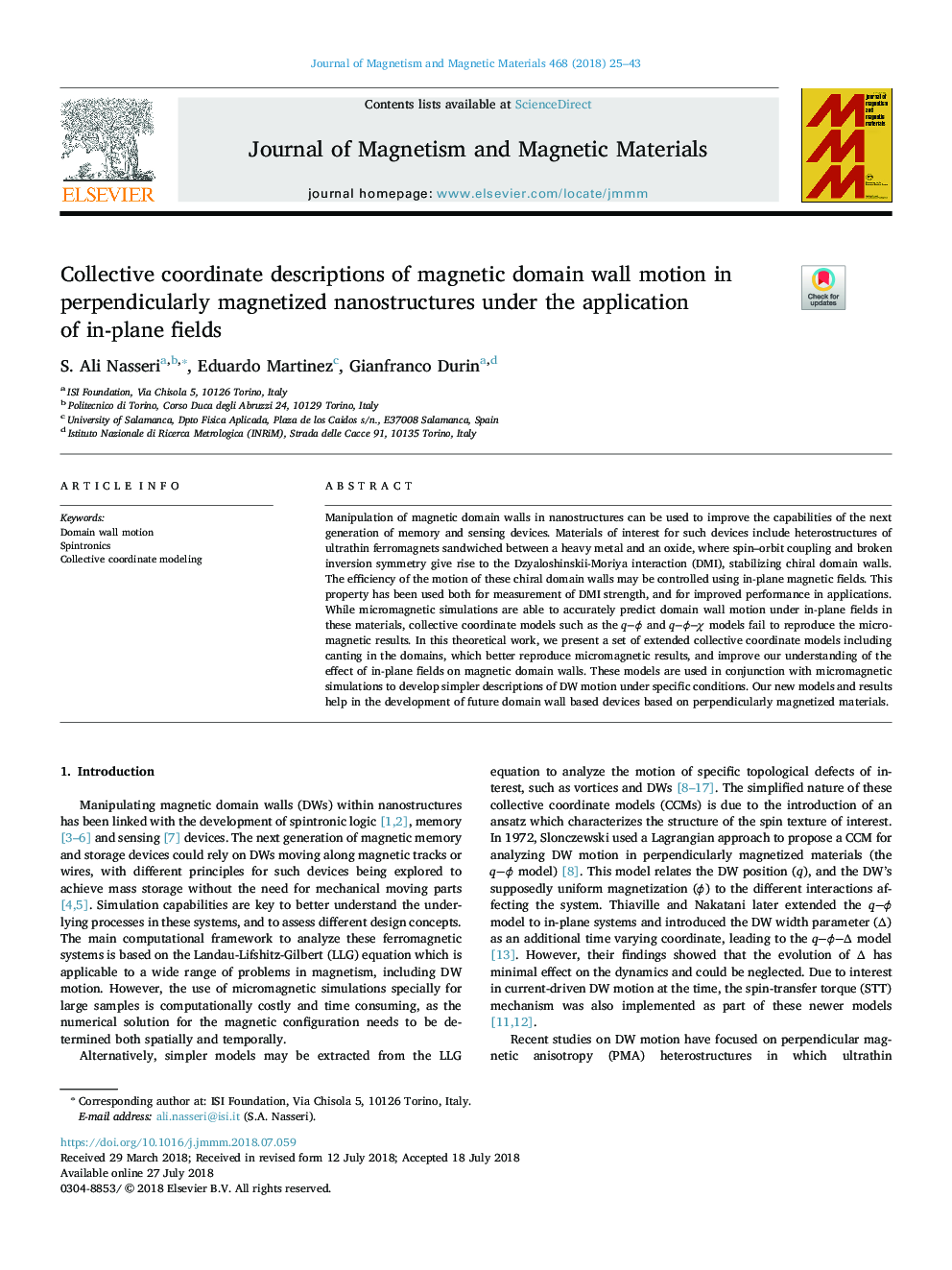| Article ID | Journal | Published Year | Pages | File Type |
|---|---|---|---|---|
| 8152443 | Journal of Magnetism and Magnetic Materials | 2018 | 19 Pages |
Abstract
Manipulation of magnetic domain walls in nanostructures can be used to improve the capabilities of the next generation of memory and sensing devices. Materials of interest for such devices include heterostructures of ultrathin ferromagnets sandwiched between a heavy metal and an oxide, where spin-orbit coupling and broken inversion symmetry give rise to the Dzyaloshinskii-Moriya interaction (DMI), stabilizing chiral domain walls. The efficiency of the motion of these chiral domain walls may be controlled using in-plane magnetic fields. This property has been used both for measurement of DMI strength, and for improved performance in applications. While micromagnetic simulations are able to accurately predict domain wall motion under in-plane fields in these materials, collective coordinate models such as the q-Ï and q-Ï-Ï models fail to reproduce the micromagnetic results. In this theoretical work, we present a set of extended collective coordinate models including canting in the domains, which better reproduce micromagnetic results, and improve our understanding of the effect of in-plane fields on magnetic domain walls. These models are used in conjunction with micromagnetic simulations to develop simpler descriptions of DW motion under specific conditions. Our new models and results help in the development of future domain wall based devices based on perpendicularly magnetized materials.
Keywords
Related Topics
Physical Sciences and Engineering
Physics and Astronomy
Condensed Matter Physics
Authors
S. Ali Nasseri, Eduardo Martinez, Gianfranco Durin,
